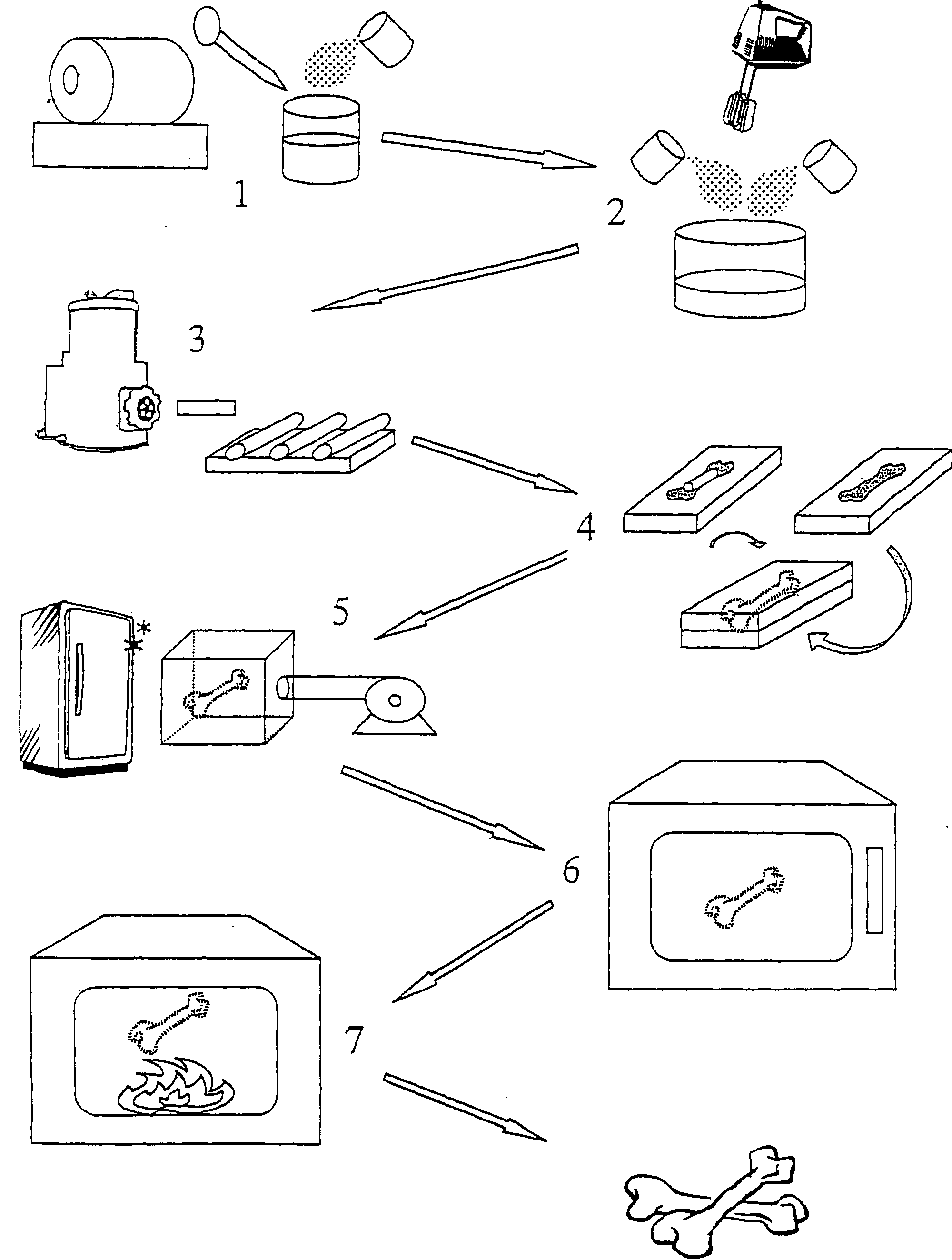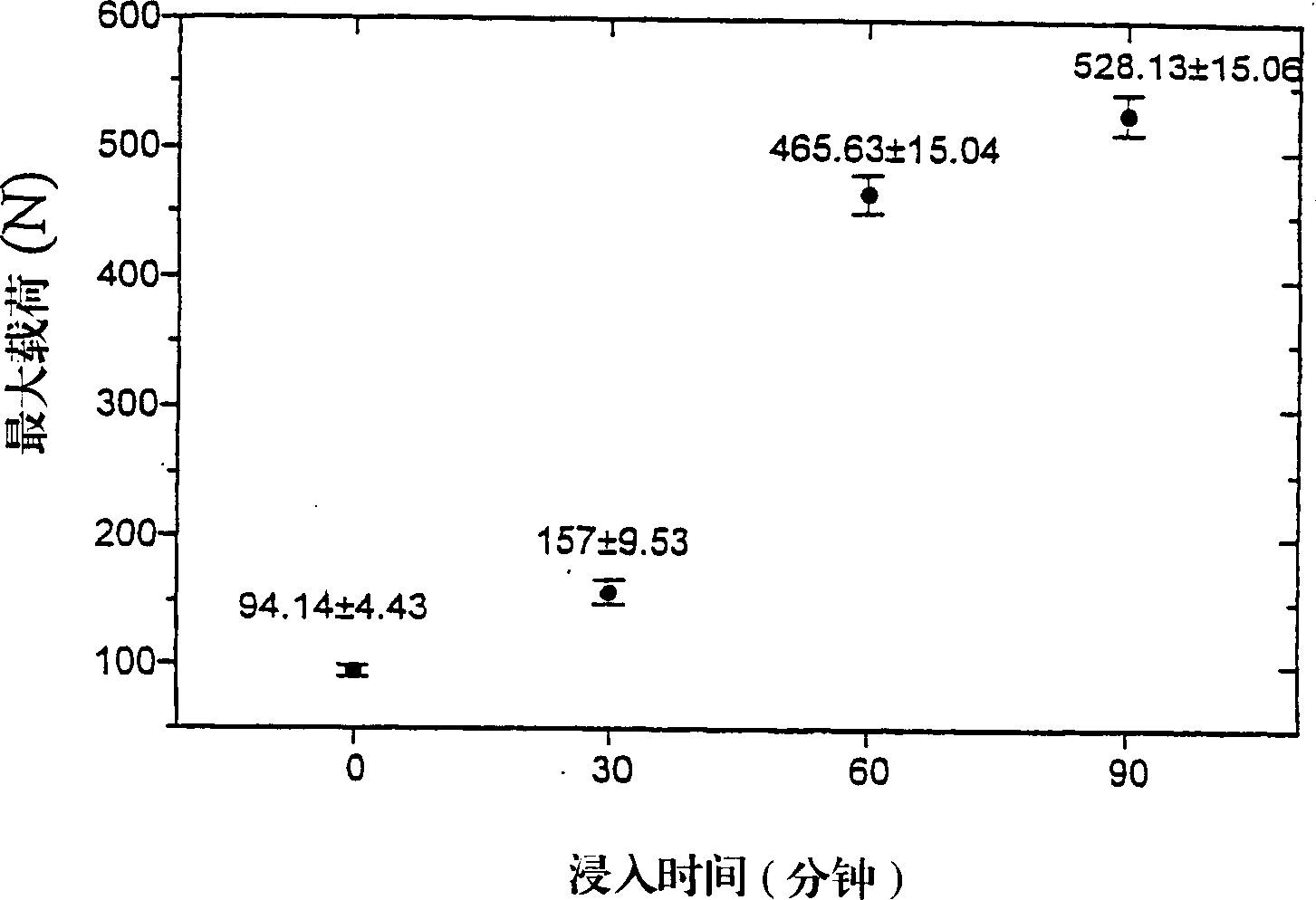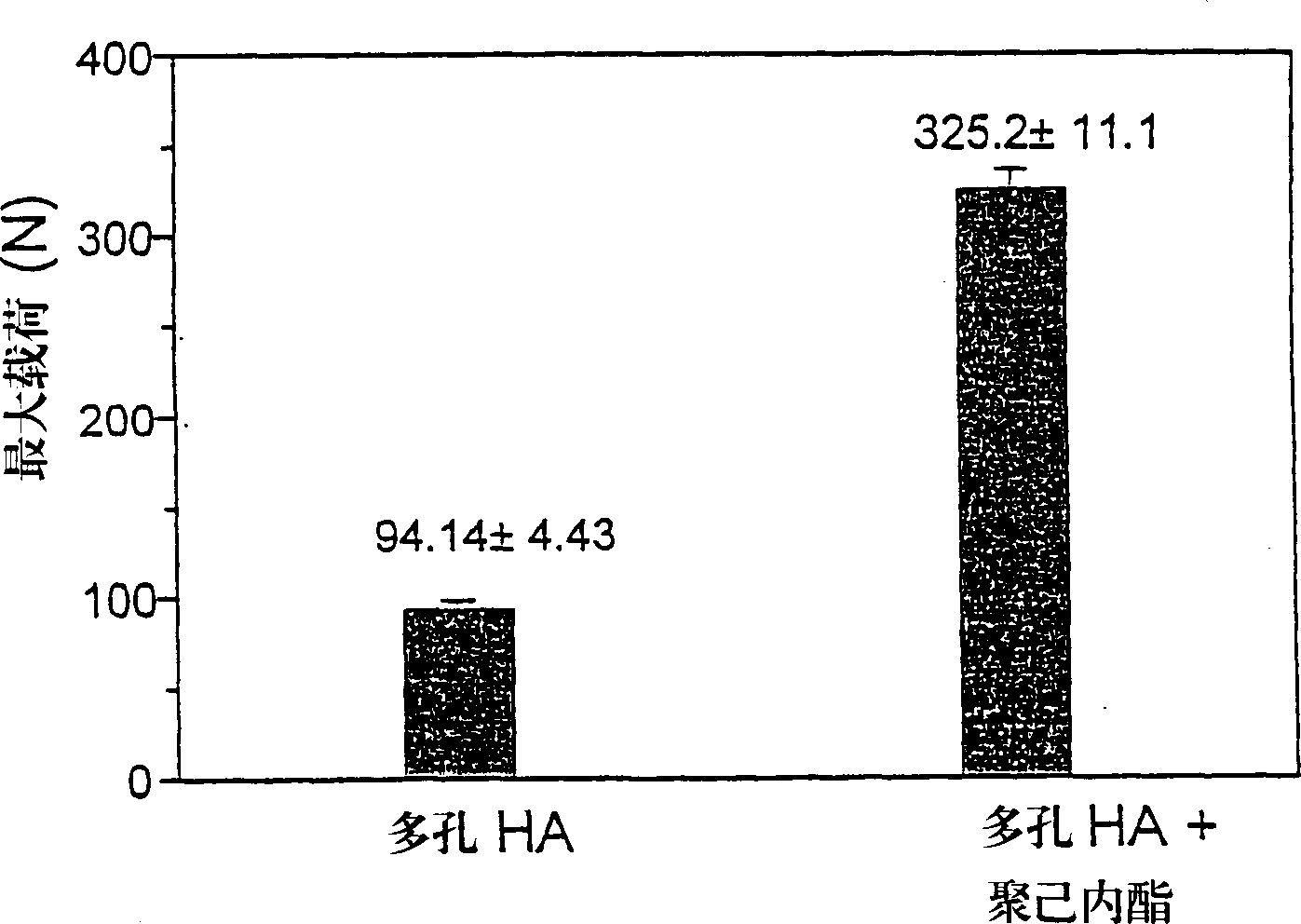Porous synthetic bone graft and method of manufacture thereof
A technology of artificial bone and porous structure, applied in the field of artificial bone, which can solve the problems that nutrients cannot flow through the artificial porous graft bone, and the graft bone is not suitable for large-scale applications, etc.
- Summary
- Abstract
- Description
- Claims
- Application Information
AI Technical Summary
Problems solved by technology
Method used
Image
Examples
Embodiment 1
[0052] Commercially available medical grade hydroxyapatite Ca with a particle size of 0.6–1 μm was used 10 (PO 4 ) 6 (OH) 2 Powder (ASTMF118588) to produce artificial porous bone graft. The first step is to prepare a slurry consisting of:
[0053] 160g hydroxyapatite powder
[0054] 70ml deionized water
[0055] 2 g ammonium polyacrylate
[0056] The ingredients are first mixed uniformly in a plastic container with a spatula. When a homogeneous solution had formed, mechanical agitation was performed at approximately 1200 rpm for 5 minutes with a double blade stirrer. This made approximately 115ml of slurry. The slurry is then poured into a drum mill to further disperse the clot; this is a polyethylene flask, 10 cm long and 6 cm in diameter, containing a 100 cm 3 high density small Al 2 o 3 cylinder. The drum mill was sealed and turned at 120 rpm for 30 minutes to form a homogeneous slurry.
[0057] 70 grams of finely sifted wheat flour and 7 grams of yeast cells w...
Embodiment 2
[0067] A sample of the porous HA article obtained in Example 1B was immersed in a boiling HA slurry with an average particle size of 0.2 μm. Immersion times ranged from 30 minutes to 90 minutes with 30 minute intervals and the slurry was constantly agitated. Afterwards, the excess slurry was removed through a centrifugation process (at a speed of 2500-15000 rpm). These samples were then annealed at 1280°C for 5 hours.
[0068] The samples were mechanically tested using a Lloyd benchtop testing machine equipped with a 2.5KN force gauge and computer remote control. The load was applied to these specimens by a crosshead speed of 0.1 mm per minute (average specimen contact area of 0.8 cm 2 ) until a brittle break occurs. exist figure 2 The obtained results are shown in . It can be seen that the compressive strength of the porous HA specimen increases with the immersion time.
Embodiment 3
[0070] 6 grams of PCL were melted in a 150cc glass beaker by placing in a 60°C furnace. After the solid PCL had melted into a clear viscous fluid, 20ml of acetone was added to dissolve the PC1 and form a liquid solution. The viscosity of the solution is 0.8835±0.025pas. The porous sample of Example IB was then immersed in the solution and kept boiling by placing it on a hot plate at a constant temperature of 57°C.
[0071] After 20 minutes, the samples were removed and subjected to a centrifugation process (speed 2500-15000 rpm) to remove any excess solution from the interconnected macroporous structure. These samples were then placed in an oven at 60°C to melt any blocked PCL in the macroporous structure, and the centrifugation process was repeated.
[0072] The mechanical tests of Example 2 were carried out. The results obtained are as in image 3 as shown in. It can be seen that the PCL reinforced HA samples have significantly enhanced compressive strength.
[0073] ...
PUM
 Login to View More
Login to View More Abstract
Description
Claims
Application Information
 Login to View More
Login to View More - R&D
- Intellectual Property
- Life Sciences
- Materials
- Tech Scout
- Unparalleled Data Quality
- Higher Quality Content
- 60% Fewer Hallucinations
Browse by: Latest US Patents, China's latest patents, Technical Efficacy Thesaurus, Application Domain, Technology Topic, Popular Technical Reports.
© 2025 PatSnap. All rights reserved.Legal|Privacy policy|Modern Slavery Act Transparency Statement|Sitemap|About US| Contact US: help@patsnap.com



